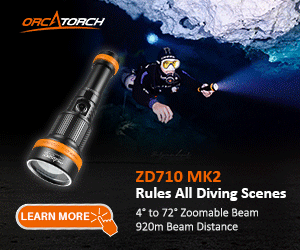I've been reading this thread with a lot of interest. I'm an engineer by trade, and appreciate the work and effort put into the "technical papers". They make for interesting reading. I admit I'm a geek.
Although I like the "hardware" side of scuba... the regulators, BC's, cameras, computers, etc... I got into scuba for the fun... not for the technical side (like tri-mix gas and deco). I like "looking at all the pretty fish and cool wrecks." And, I like staying safe.
Three years certified. AOW and Nitrox under my belt, and I'm looking to complete rescue and emergency first response this year. More than sixty dives under my belt, I'm very comfortable underwater, but, I'm nearly always the guy (of the guys in my dive buddy group) with the least amount of air at the end of a dive. I'm much better now than I was three years ago. Three years ago, I would suck an AL80 from 3000 to 500 psi in 30 minutes in 35 feet of water. Now, I can get 70 to 75 minutes on that same dive profile.
I've been reading thru the tables that Rick posted. Very interesting. My computer does SAC in cubic feet per minute. My watch in PSI per minute. The tables are in PSI per minute... no problem.
I'm looking thru the tables, and looking at my computer log book entries, comparing the PSI I actually did start an acsent to when the tables say I should have. (I hope that made sense).
Then, I compared SAC's for different dives. Deep dives, 80 to 100 feet, my SAC is about 45 psi/minute. Shallow dives, less than 40 feet, my SAC is about 25 psi/minute. That makes sense.
With a 25 psi/minute SAC, at a depth of 40 feet, the tables say I should have begun my ascent with 664 psi in my tank to be back on the boat with 500psi and safety stop, etc... sounds reasonable to me.
On a recent wreck dive to 100 feet, and a mild current (with an ascent line and 35 feet of viz), I had "planned" the dive to return to the ascent line (which was tied to the wreck in about 50 feet of water) with 750psi in my tank. My plan was for a four minute stop at 15 feet, and be on the boat with no less than 400psi, with obviously, no deco planned. This pretty much agrees with the chart.
I didn't dive my plan... I was looking around at all the cool stuff in 90 feet of water for a minute or two longer than I had planned. I was on the rope with about 650psi, and made a six minute safety stop (with the boat in sight overhead), getting out of the water and on the boat with about 300 psi in my tank. My buddy was with me the whole time, and had about 600 in his tank when he hit the boat.
I honestly didn't feel unsafe at any time during the dive... but reflection on the dive after reading thru this thread/discussion REMINDED ME that I didn't really leave any air for my buddy. If my buddy had a problem, and needed my air, we would have had a short safety stop at best, and been on the boat with next to nothing in the tank.
I wasn't a good buddy. Plain and simple. I should have been back on the ascent line with at least 750psi, the table says 830psi (with a 45 psi/min SAC rate)
I thought I was planning the dive pretty well...but now I know I could have planned it better.
I'm going to make a small copy of this chart Rick posted, laminate it, and keep it with my dive bag. It's a great little quick reference sheet. I'm going to use it during dive planning.
That being said. On an easy, lazy reef dive, with no current or surge, in 30 feet of water... with 80 feet of viz... and virtually no safety stop. I'll still come back to the boat with 400 psi in my tank, and feel good about it.





